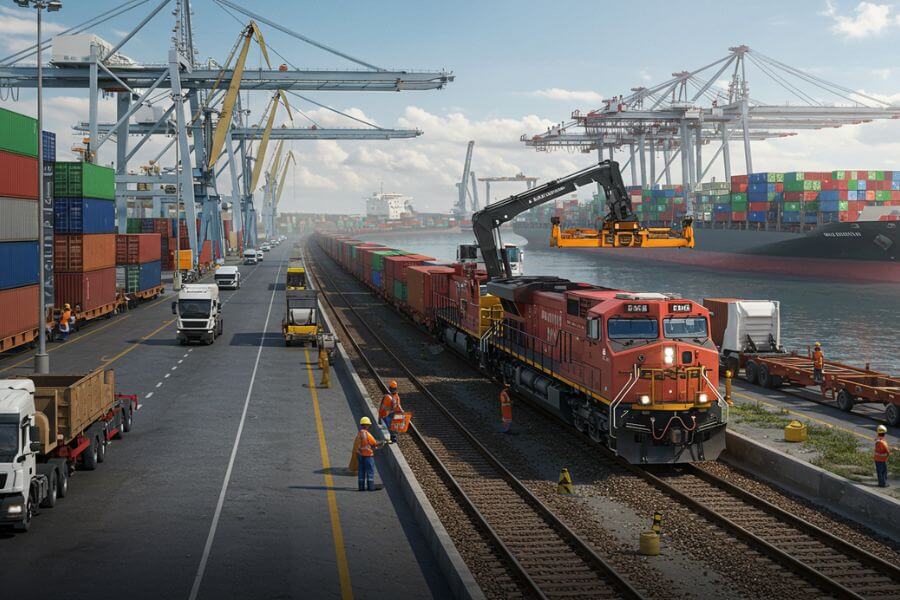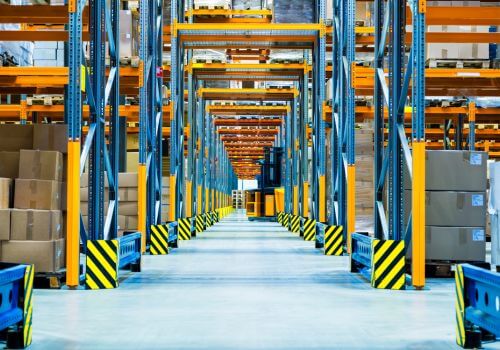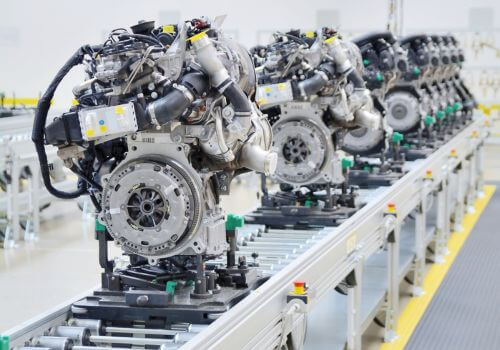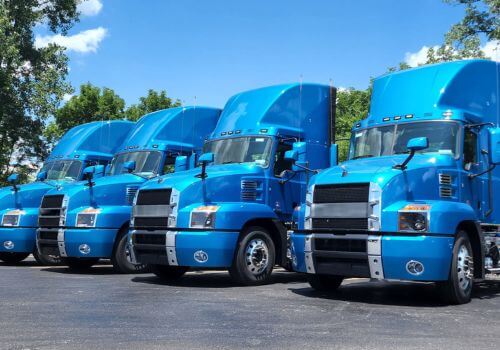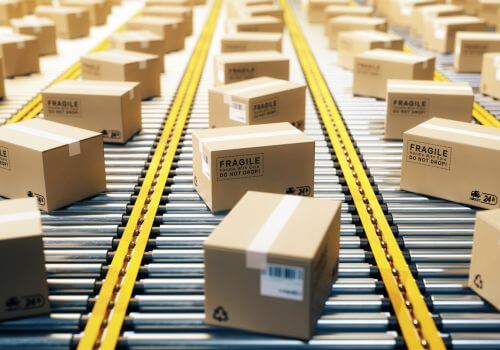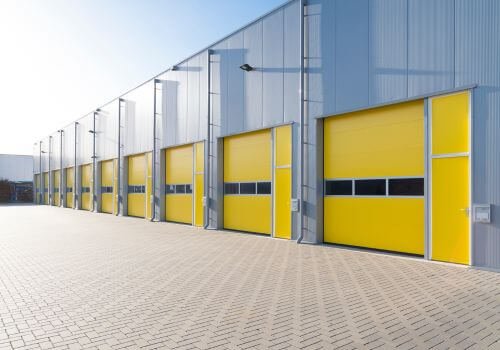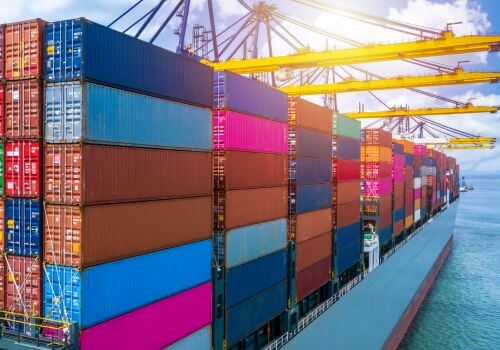Intermodal transportation has become one of the most strategic and cost-effective solutions for businesses looking to move freight in today’s fast-paced, global economy. Instead of relying on a single mode of transport, intermodal logistics combines multiple modes such as rail, truck, sea, and air into a seamless system. This approach allows businesses to maximize efficiency, reduce costs, and build resilient supply chains that can adapt to disruptions.
In this comprehensive guide, we’ll dive deeper into what intermodal transportation is, how it works, the key modes involved, its benefits and challenges, the industries that rely on it most, and the commonly asked questions about it.
What is intermodal transportation?
Intermodal transportation refers to the movement of freight using two or more different modes of transportation in a coordinated manner, without directly handling the cargo itself when switching between modes. The cornerstone of intermodal transport is the standardized container: steel boxes of uniform sizes (typically 20-foot, 40-foot, or 53-foot) that can be loaded onto ships, trains, and trucks.
Instead of unloading goods when switching from a truck to a train or from a ship to a truck, the entire container is simply lifted and placed onto the next mode of transport. This minimizes the risk of damage, reduces handling costs, and improves speed and efficiency.
For example, a company importing electronics from Asia might load the goods into containers in Shanghai, ship them by sea to Los Angeles, transfer them to a rail network for cross-country transport, and then finish the journey with trucks delivering to regional distribution centers. At no point do workers need to unload and reload the cargo itself only the container moves.
This system has made intermodal transport the backbone of global trade and domestic supply chains alike.
How does intermodal transportation work? (step-by-step guide)
The process of intermodal logistics is highly coordinated and involves multiple handoffs, but it follows a fairly standard sequence:
- Pickup at origin by truck: The journey begins with goods being loaded into an intermodal container. A truck hauls the container from the shipper’s facility to an intermodal terminal, rail yard, or port.
- Transfer to rail or port: At the terminal, cranes or other specialized equipment lift the container onto a railcar or vessel. This transfer is quick and efficient since containers are designed for compatibility across modes.
- Long-haul transport: Rail or ocean freight is typically used for long-haul moves. Rail is highly fuel-efficient for domestic cross-country shipments, while ocean vessels dominate international trade.
- Transfer at destination terminal: Once the container arrives at the destination port or rail terminal, it is offloaded and placed on another truck for final distribution.
- Final mile delivery: Trucks complete the last leg, delivering directly to warehouses, distribution centers, or end customers.
This process reduces reliance on a single mode, leveraging the strengths of each. Rail and sea provide efficiency and lower costs for long distances, while trucks provide flexibility and speed for short hauls and last-mile delivery.
What are the key transportation modes in intermodal transportation?
Each mode of transportation plays a specific role in intermodal logistics. By combining them, businesses can achieve the right balance of cost, speed, and reliability.
Truck
Trucks provide critical flexibility and door-to-door service. They are used for both the first mile (picking up containers from origin locations) and last mile (delivering to final destinations). Their ability to reach areas not served by rail or ports makes them indispensable.
Rail
Rail transport is the workhorse of domestic intermodal freight in many countries. Trains can haul hundreds of containers in a single trip, making them extremely efficient for bulk and long-haul transport. Rail also offers significant cost savings compared to trucking over long distances and is much more fuel-efficient, reducing carbon emissions.
Ocean shipping
For international trade, ocean freight is the backbone of global intermodal logistics. Container ships carry thousands of containers across oceans, enabling businesses to access global markets at scale. While slower than air freight, ocean shipping is far more cost-effective for large volumes.
Air freight
Air transport is the fastest option and is often used for high-value, urgent, or perishable goods. Although it is the most expensive mode, integrating air freight into an intermodal strategy can be valuable for businesses that need speed for certain products while balancing cost efficiency for others.
What are the benefits of intermodal transportation?
Intermodal transportation offers a range of benefits that make it attractive to shippers and logistics providers:
- Cost savings: Using rail and ocean freight for long-haul moves can reduce transportation costs by 20~40% compared to trucking or air. Businesses with high-volume or long-distance shipments gain the most savings.
- Efficiency and reliability: Intermodal containers simplify transfers and reduce time spent handling cargo. This not only minimizes delays but also enhances schedule reliability.
- Reduced risk of damage: Because goods remain inside the same container throughout the journey, there is less handling involved, which reduces the likelihood of loss, damage, or theft.
- Environmental benefits: Rail produces up to 75% fewer greenhouse gas emissions than trucks on a per-ton-mile basis. Similarly, ocean shipping is more fuel-efficient than air. Businesses can meet sustainability goals while reducing costs.
- Scalability and flexibility: Intermodal transport allows companies to adapt to changing supply chain needs. If one route is congested or disrupted, freight can be rerouted using alternative modes.
What are the challenges of intermodal transportation?
Despite its many advantages, intermodal transport also presents challenges that businesses need to manage:
- Longer transit times: Rail and ocean shipping can take significantly longer than trucking or air. This may not suit businesses that require fast turnaround or frequent replenishment.
- Complex coordination: Since multiple carriers and handoffs are involved, effective planning and communication are essential. Miscommunication can lead to delays or missed connections.
- Infrastructure constraints: Not all regions have robust rail networks or intermodal terminals. Businesses in rural areas may face challenges accessing intermodal services.
- Upfront investment: Shippers may need to invest in intermodal containers, technology platforms, or partnerships to make the system work effectively.
What are the industries that benefit most from intermodal transportation?
Intermodal transportation is not limited to one type of product or industry; it’s a versatile solution that can be adapted to different supply chain needs. However, some industries gain particularly strong advantages because of their scale, cargo type, or geographical reach. Let’s look at the sectors that benefit the most.
Retail and e-commerce
The retail and e-commerce sectors rely heavily on high-volume, long-distance shipping. Companies like Amazon, Walmart, and Target move millions of units across vast regions, often with products sourced internationally. Intermodal transportation allows them to import goods via ocean freight, move them inland on rail, and then distribute locally with trucks.
- Why it works: Intermodal lowers costs per unit, ensures consistent delivery schedules, and supports seasonal surges like holiday shopping or big sales events.
- Example: A major e-commerce retailer importing electronics from China can reduce costs by sending containers via ocean freight to West Coast ports, then transferring them to rail for cross-country movement to Midwest distribution centers.
Automotive industry
The automotive industry depends on precise, efficient supply chains to move parts and finished vehicles. Intermodal is particularly useful because it can handle both high-volume containerized auto parts and large shipments of vehicles.
- Why it works: Rail is ideal for transporting heavy components and finished vehicles, while trucks manage local and regional delivery to dealerships.
- Example: An automaker in Michigan may import steel parts from Europe via ocean freight, transfer containers to rail for inland movement, and then use trucks for final delivery to assembly plants.
Food and beverage
The food and beverage industry needs to move both perishable and non-perishable items quickly and safely. Refrigerated intermodal containers (reefers) make it possible to transport temperature-sensitive goods like fresh produce, dairy, meat, and beverages over long distances.
- Why it works: Intermodal combines the cost savings of rail and sea with the specialized equipment needed for food safety compliance.
- Example: A wine distributor in California can ship bottled products via rail to East Coast markets in refrigerated containers, keeping quality intact while lowering transport costs.
Manufacturing and industrial goods
Manufacturers move both raw materials and finished products, often across domestic and international borders. Intermodal supports these complex supply chains by providing flexibility and cost efficiency.
- Why it works: Containers allow raw materials like metals, plastics, or chemicals to be transported securely, while finished products can be distributed globally.
- Example: A steel manufacturer in Ohio may rely on intermodal to receive iron ore by rail from ports and distribute finished steel coils by rail and truck to regional buyers.
Energy and chemicals
The energy and chemical industries transport hazardous or bulk liquids that require specialized handling. Tank containers are designed for these products, and intermodal offers a safe, regulated way to move them across long distances.
- Why it works: Safety, compliance, and cost efficiency are critical for these industries, and intermodal helps achieve all three.
- Example: A chemical company might use intermodal tanks to ship liquid chemicals from a Gulf Coast refinery to manufacturing plants in the Midwest.
While virtually any industry can use intermodal solutions, the sectors above rely on them most because of the balance of cost, speed, safety, and scalability.
Intermodal transportation vs. multimodal transportation
The terms intermodal transportation and multimodal transportation are often used interchangeably, but there are important differences that impact cost, control, and efficiency.
Intermodal transportation
- Definition: In intermodal shipping, goods are transported using multiple modes (truck, rail, ocean, air), but each leg of the journey may be handled by a different carrier under separate contracts.
- Key feature: The cargo stays inside the same container across all modes, eliminating the need for unloading and reloading.
- Advantages:
- Flexibility to choose the best carrier for each segment.
- Cost transparency, since shippers negotiate directly with carriers.
- Ability to switch routes or carriers if disruptions occur.
- Challenges: Requires more coordination and management from the shipper or their logistics partner.
Multimodal transportation
- Definition: In multimodal shipping, goods are also moved using multiple modes of transport, but the entire journey is managed by a single carrier or logistics provider under one contract.
- Key feature: The shipper deals with one provider, even though multiple modes are involved.
- Advantages:
- Simplified documentation and billing, since everything is under one contract.
- Reduced administrative burden for the shipper.
- Greater convenience, as the provider manages all handoffs.
- Challenges:
- Less flexibility to choose carriers for individual legs.
- Higher costs in some cases, since the provider manages everything end-to-end.
Example comparison
Imagine a company shipping electronics from Asia to the U.S.:
- With intermodal, they might contract directly with an ocean carrier for the sea leg, a rail provider for the inland leg, and a trucking company for final delivery.
- With multimodal, they would sign a single contract with a logistics provider, who handles all three legs on their behalf.
Bottom line: Intermodal gives more flexibility and cost control, while multimodal offers simplicity and convenience. The choice depends on a company’s priorities: cost and flexibility versus simplicity and ease of management.
What are the roles of 3PLs in intermodal transportation?
Managing intermodal transportation can be complex, involving multiple carriers, schedules, and regulatory requirements. This is where third-party logistics providers (3PLs) come in. A 3PL acts as an intermediary and logistics expert, helping businesses unlock the full benefits of intermodal shipping.
How 3PLs add value
- Carrier network access: 3PLs have established relationships with trucking companies, railroads, ocean carriers, and air freight providers. This broad network allows them to negotiate better rates and secure capacity, even during peak seasons.
- Expert coordination: Intermodal logistics requires precise timing to ensure containers are transferred seamlessly between modes. 3PLs manage these handoffs, reducing delays.
- Technology and visibility: Many 3PLs provide advanced transportation management systems (TMS) that allow real-time shipment tracking, route optimization, and performance reporting.
- Regulatory compliance: For international intermodal shipments, customs clearance, documentation, and trade compliance can be complex. 3PLs manage these processes, avoiding costly delays.
- Risk management: 3PLs provide insurance options, contingency planning, and proactive monitoring to mitigate risks like port congestion, weather disruptions, or strikes.
Why businesses rely on 3PLs
- Small and mid-sized businesses often lack the resources to manage intermodal complexity in-house.
- Large enterprises use 3PLs to scale operations quickly and leverage expertise across markets.
Example: A U.S.-based furniture retailer importing goods from Vietnam might partner with a 3PL to arrange ocean freight to Los Angeles, rail to Chicago, and trucking to distribution centers nationwide. The 3PL manages all contracts, schedules, and customs documentation, freeing the retailer to focus on sales and customer service.
Frequently asked questions about intermodal transportation
Q1: What types of freight are best suited for intermodal transportation?
Intermodal works best for containerized cargo such as consumer goods, automotive parts, electronics, food and beverage, raw materials, and chemicals. Bulky, high-volume, or long-haul shipments see the most cost savings.
Q2: How much money can businesses save with intermodal shipping?
Savings vary depending on distance, volume, and routes. On average, rail can reduce transportation costs by 20~40% compared to long-haul trucking, and ocean is significantly cheaper than air freight.
Q3: Is intermodal transportation environmentally friendly?
Yes. Rail produces up to 75% fewer emissions per ton-mile than trucks, and ocean freight is much more fuel-efficient than air. Companies using intermodal can reduce their carbon footprint while saving costs.
Q4: How do businesses track intermodal shipments across multiple modes?
Most companies use transportation management systems (TMS) provided by 3PLs or carriers. These systems integrate data from all modes to provide end-to-end visibility and real-time updates.
Q5: Can intermodal shipping handle time-sensitive deliveries?
Intermodal is not always the fastest option, but with proper planning, it can handle many time-sensitive deliveries. For urgent shipments, businesses often combine intermodal with air freight for the fastest possible transit times.
Q6: What is the difference between a 3PL and a freight forwarder in intermodal logistics?
A 3PL typically manages the entire logistics process, including warehousing, distribution, and intermodal coordination, while a freight forwarder focuses primarily on arranging transportation. Many companies use both, depending on needs.
Q7: How does intermodal shipping handle disruptions like port congestion or weather delays?
Intermodal systems are flexible; shipments can be rerouted to alternative ports, switched from rail to truck, or delayed in transit with minimal handling. Working with a 3PL helps businesses create contingency plans for such disruptions.
In summary, Intermodal Transportation in logistics is the coordinated movement of goods using multiple modes of transport, such as trucks, trains, ships, or airplanes within a single, seamless supply chain, utilizing standardized containers to optimize efficiency, cost, and transit time.

